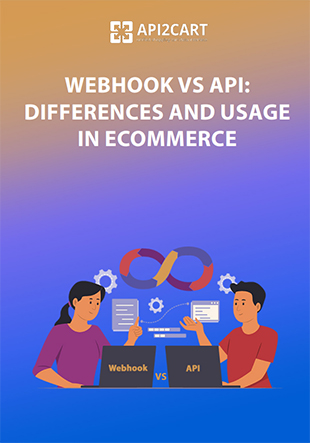
Main features, differences, and the usage of webhooks and APIs in the eCommerce sphere.
Main features, differences, and the usage of webhooks and APIs in the eCommerce sphere.
This guide will explore the significant distinctions between webhooks and APIs and their usage in eCommerce software development.
In the rapidly changing eСommerce environment, effective data interchange and smooth communication among various systems is very important. Two key mechanisms that enable this communication are webhooks and APIs. Both have the same function, however, they work differently and serve diverse eСommerce necessities.
This guide will explore the major distinctions between webhooks and APIs and their usage in eCommerce. These traits can make the software utilize the benefits of these tools to optimize eCommerce processes, enhance customer experience, and stimulate growth in the competitive online market.
We will uncover the benefits that webhooks and APIs bring to eCommerce software improving efficiency, scalability, and customer satisfaction, including provision of real-time updates and ability to integrate seamlessly with third-party services. No matter if you are an experienced eCommerce software provider or if you just have started your digital way, this guide will provide you knowledge and instruments which will help you to overcome webhooks and API complexities and harness their full potential in driving eCommerce success.
Download the 'Webhook vs API: Differences and Usage in eCommerce' guide now for free.
PLEASE FILL IN THE FORM TO DOWNLOAD YOUR DOCUMENT:

Webhook vs API: Differences and Usage in eCommerce
Discover detailed information related to webhooks and APIs and their usage in eCommerce.
